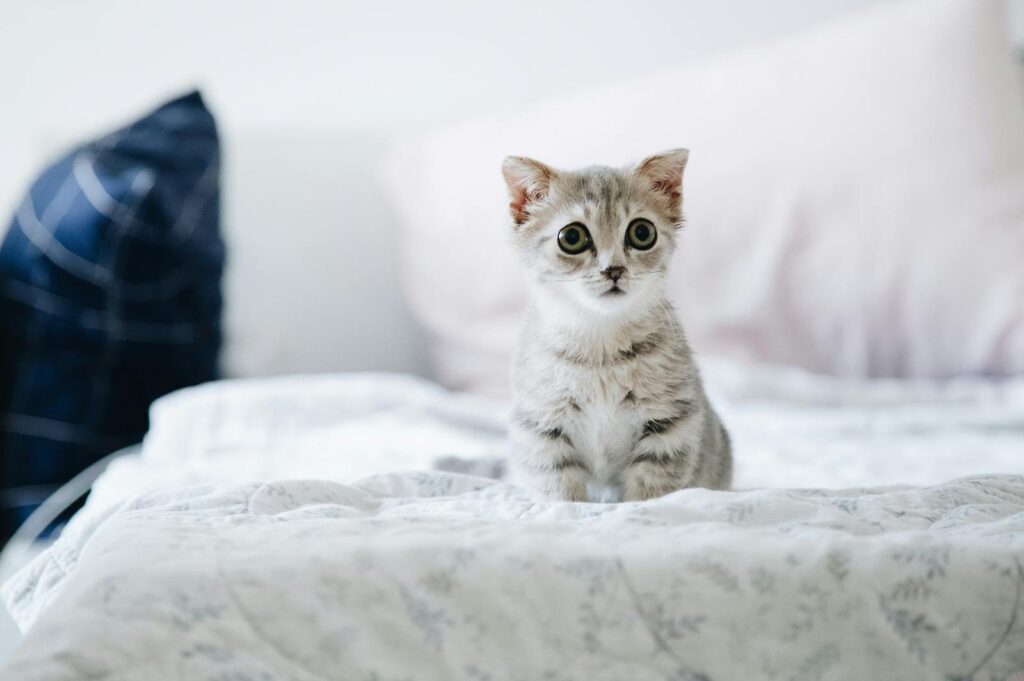When it comes to our feline friends, their dental health is often overlooked. Yet, much like us, cats are susceptible to a variety of dental diseases that can affect their overall well-being. Understanding common cat dental issues not only helps maintain your pet’s health but also ensures they lead a comfortable life.
From identifying symptoms to knowing when to consult a vet, being informed about cat dental diseases is crucial. Let’s dive into the basics and arm you with the knowledge you need to keep those feline smiles shining bright.
What are the most common dental diseases in cats?
Periodontal disease is one of the most prevalent dental issues in cats. It begins with the accumulation of plaque and tartar on the teeth, which can lead to inflammation of the gums (gingivitis) and, if left untreated, can progress to affect the structures supporting the teeth, potentially leading to tooth loss. Tooth resorption is another common dental condition in cats. This painful disease involves the gradual destruction of a tooth’s structure, starting at the root and often progressing to the crown. The exact cause is not well understood, but it is believed to be related to an abnormal immune response.
Stomatitis is a severe and painful inflammation of the mouth’s soft tissues, including the gums, tongue, and lining of the cheeks. This condition can cause significant discomfort and difficulty eating. The exact cause is often unknown, but it is thought to be related to an overactive immune response to plaque and bacteria in the mouth. Feline odontoclastic resorptive lesions (FORLs) are a specific type of tooth resorption that affects many cats. These lesions can be extremely painful and often require extraction of the affected teeth. The cause of FORLs is not entirely understood, but they are a significant concern in feline dental health.
Oral tumors, while less common than other dental diseases, can occur in cats. These can be benign or malignant and may present as lumps or growths in the mouth. Early detection and treatment are crucial for a better prognosis, making regular dental check-ups important. Feline chronic gingivostomatitis (FCGS) is a severe, chronic inflammatory condition of the mouth. It involves widespread inflammation and ulceration of the gums and oral mucosa. The exact cause is unknown, but it is thought to involve an inappropriate immune response to dental plaque and bacteria.
How can cat dental diseases be prevented?
Regular dental check-ups with a veterinarian are crucial for preventing cat dental diseases. These check-ups allow for early detection of potential issues and professional cleaning, which can remove plaque and tartar buildup that regular brushing might miss. Daily or at least weekly brushing of your cat’s teeth can significantly reduce the risk of dental diseases. Use a toothbrush and toothpaste specifically designed for cats, as human toothpaste can be harmful to them.
Providing dental treats and toys can help maintain your cat’s oral health. These products are designed to reduce plaque and tartar buildup while also satisfying your cat’s natural chewing instincts. A balanced diet is essential for your cat’s overall health, including their dental health. Feeding your cat high-quality, dry kibble can help scrape off plaque as they chew, while wet food can contribute to a balanced diet. Monitoring your cat for signs of dental issues, such as bad breath, drooling, difficulty eating, or pawing at the mouth, can help catch problems early. Early intervention can prevent minor issues from developing into serious dental diseases.
Consider using water additives designed to promote oral health. These additives can be mixed into your cat’s water bowl and help reduce bacteria and plaque formation in the mouth.
What are the symptoms of dental diseases in cats?
Cats with dental diseases often exhibit bad breath, also known as halitosis. This is one of the most noticeable symptoms and is usually caused by bacterial buildup in the mouth. Another common symptom is drooling, which may sometimes be tinged with blood. This can indicate inflammation or infection in the gums or other oral tissues. Owners might observe their cats pawing at their mouths or faces. This behavior can be a sign of discomfort or pain caused by dental issues.
Difficulty eating or a decreased appetite can also be indicative of dental disease. Cats may chew on one side of their mouth or drop food while eating due to oral pain. Swollen or bleeding gums are a clear sign of gingivitis or periodontal disease. Healthy gums should be pink, so any redness or swelling is a cause for concern. Loose or missing teeth can be a symptom of advanced dental disease. This can lead to further complications if not addressed promptly.
Behavioral changes such as increased irritability or withdrawal from social interaction can also be signs of dental discomfort. Cats in pain may become less active and more reclusive. Visible tartar buildup on the teeth, which appears as yellow or brown deposits, can indicate poor dental health and the presence of dental disease.
How often should cats have dental check-ups?
Cats should ideally have dental check-ups at least once a year. This annual examination allows veterinarians to detect early signs of dental diseases, such as gingivitis, periodontitis, and tooth resorption, which are common in cats. Older cats or those with a history of dental issues may require more frequent check-ups, such as every six months. Regular monitoring helps manage and prevent the progression of dental diseases, ensuring better overall health for your feline companion. Dental check-ups are essential for maintaining your cat’s oral hygiene. During these visits, veterinarians can perform professional cleanings, remove tartar buildup, and address any dental problems that may not be visible to the naked eye.
Routine dental examinations also provide an opportunity for pet owners to learn about proper at-home dental care. Veterinarians can offer guidance on brushing techniques, dental diets, and other preventive measures to keep your cat’s teeth and gums healthy.
| Dental Care Method | Frequency | Benefits |
|---|---|---|
| Brushing with pet toothpaste | Daily | Prevents tartar buildup and gum disease |
| Professional dental cleaning | Every 6-12 months | Thorough cleaning and assessment under anesthesia |
| Dental diets and treats | Regularly | Helps reduce plaque and tartar formation |
| At-home dental chews | Several times a week | Promotes healthy teeth and gums |
What treatments are available for cat dental diseases?
Professional dental cleanings are one of the most common treatments for cat dental diseases. These cleanings are performed by veterinarians under general anesthesia to ensure thorough removal of plaque and tartar from both above and below the gum line. This process helps prevent the progression of periodontal disease and other dental issues. Tooth extractions may be necessary in cases where a cat’s tooth is severely damaged or infected. This procedure involves the surgical removal of the affected tooth to alleviate pain and prevent further complications. Extractions are often required for conditions such as advanced periodontal disease, tooth resorption, or severe dental fractures.
Antibiotics are sometimes prescribed to treat bacterial infections associated with dental diseases. These medications help control the infection and reduce inflammation, promoting healing and preventing the spread of bacteria to other parts of the body. Antibiotics are typically used in conjunction with other treatments, such as dental cleanings or extractions. Pain management is an essential aspect of treating cat dental diseases. Veterinarians may prescribe pain relief medications, such as non-steroidal anti-inflammatory drugs (NSAIDs) or opioids, to help manage discomfort and improve the cat’s quality of life during the treatment and recovery process.
Dietary changes can also play a role in managing and preventing dental diseases in cats. Special dental diets and treats are formulated to reduce plaque and tartar buildup, promoting better oral health. These products often have a specific texture or contain ingredients that help clean the teeth as the cat chews. Home dental care is crucial for maintaining a cat’s oral health and preventing dental diseases. Regular brushing of a cat’s teeth with a pet-safe toothpaste can help remove plaque and prevent tartar formation. Additionally, providing dental chews and toys designed to promote oral hygiene can support overall dental health.
Home dental care is crucial for maintaining a cat’s oral health and preventing dental diseases. Regular brushing of a cat’s teeth with a pet-safe toothpaste can help remove plaque and prevent tartar formation. Additionally, providing dental chews and toys designed to promote oral hygiene can support overall dental health. In some cases, advanced dental treatments such as root canal therapy or periodontal surgery may be necessary to address specific dental issues. These procedures are typically performed by veterinary dental specialists and aim to save the affected tooth or repair damaged tissues, thereby preserving the cat’s oral function and health.
Conclusion
Maintaining your cat’s dental health is crucial for their overall well-being. By paying attention to their diet, scheduling regular dental check-ups, and being vigilant about any changes in their behavior, you can prevent many common dental diseases. Remember, early detection and treatment are key to ensuring your furry friend stays happy and healthy. Don’t hesitate to consult your veterinarian if you notice any signs of dental trouble. Your cat’s smile is worth it!



